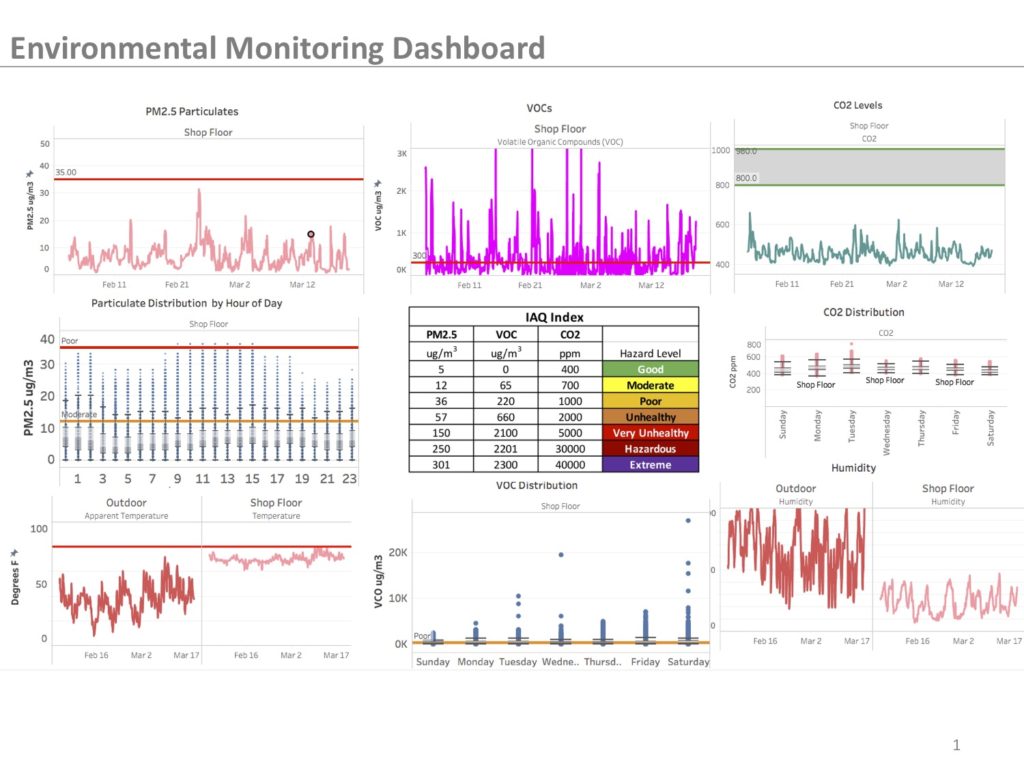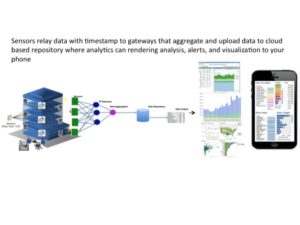IoT Connected Devices Change Everything

IoT connected devices represent the most important technological wave since the Internet, smartphones, and social media. The value proposition for the Internet of Things (IoT) is compelling because of the economic and financial value created for the built environment. The reason IoT is so important is because it builds and leverages upon the confluence and scale of an array of advanced technologies that continue to push the price-performance horizon including cloud computing, Internet connected mobile phones, semiconductors, distributed computing, machine learning and analytics. Inherent in IoT is that secure context aware connected devices drive improvements in efficiency, productivity, yield, and profitability by reducing costs.
IoT and business intelligence (BI) systems can provide a substantial enhancement to monitoring traditional key performance indicators (KPIs) such as marketing, sales, financial, operational metrics by adding new dimensions of analysis including assets, equipment, environmental conditions, health, safety, and energy. The balanced-scorecard approach to BI provides a more comprehensive understanding of business performance. IoT enables a facet of new metrics and automates the metric recording and analytics process right to your cell phone.
IoT accelerates Big Data as volume, velocity, and variety increase at an exponential rate. While BI approaches are usually pre-defined metrics to measure performance against benchmarks and KPI goals, IoT introduces variables and new dimensions of data that require context and exploration to gain insight. These new variables such as text intensive log data and analog real world events can be extremely valuable. When IoT data is curated with JSON formatted packets, Python scripts together with analytics, can generate logic defined diagnostic feedback loops, which in turn, enable cost effective optimization, innovation and process improvement. Edge analytics is able to detect anomalous events, clusters, patterns, and correlation among variables and deliver visual analysis, threshold alerts and notifications to your cell phone. In addition, actuators provide device control from your phone for turning on lights and equipment.
?
Figure 1 IoT and Analytics Process

Moore’s Law has dramatically increased chip performance and lowered costs thus helping analog semiconductors measure real world conditions with greater accuracy and lower cost. Unlike the digital world, where binary outcomes of zero and one are easily determined, in the real world variations are discerned in gradations like shades of gray not black and white. The framework of Moore’s Law can be found in other technologies including mobile subscriber, Internet users, and broadband bandwidth, among others that push the price-performance boundaries. Thomas Friedman uniquely covers the importance these technological changes in an exceptional book ‘Thank You For Being Late’.
Crucial to IoT data is accurate measurement. The ability to translate data into insight is predicated upon clean data and analytics with granularity into business model processes and day-to-day activities. The ability to generate with greater confidence means less uncertainty in the analysis.
Two errors often arise in measurement: systemic error, a bias which is somewhat consistent and random error, which can’t be predicted but its probability can be quantified with a level of confidence. Advances in analog-to-digital chips improve sensor measurement accuracy. Automated analytics and cloud services help to mitigate random errors and improve precision.
Let’s examine how IoT and analytics provide insight and value when applied to specific market applications.
Energy Management
Knowing where and when energy is being consumed can be applied to reduce energy demand at peak hours, thereby reducing excess costs. Sensors can provide automated measurement and verification (M&V) services to gain an understanding of energy consumption by rendering the building’s loan signature that in turn, can be used to reduce charges and improve energy efficiency with data that is measured and verified. IoT devices such as current transducers and wireless networks can provide analysis to your cell phone. Environmental sensors can overlay weather readings, volume production, and occupancy levels, to assess their impact on energy consumption at a small cost in relationship to energy savings.
Hospitals
IoT sensors can automate the process of logging data and assure readings are within tolerable ranges. IoT sensors can automate data logging of temperature readings to assure that vaccines and pharmaceuticals have not been comprised. Threshold alerts on refrigerated products can be sent to cell phones for faster response to avert loss. Air quality and ER environmental monitoring can also provide safe and secure procedures to help ameliorate readmission rates.
Retail
Noninvasive approaches to collecting shopper data work best when the data is anonymized to protect consumer privacy in retail operations. Occupancy sensors within light fixtures can map traffic flow and calculate dwell time. Outside weather monitoring can be grouped with point of sale and transactional data to efficiently manage the facility operations and marketing promotions. Log files in conjunction with analytics helps to define routing and approaches to expedite service.
Yield Improvement
One of the most interesting applications of IoT is farming. Maximizing yield is paramount and with resource constrained systems. IoT sensors and analytics help to drive productivity, efficiency and profits by analyzing what inputs resulted in the highest output. Soil sensors can measure and track moisture and composition. Indoor systems can track temperature, humidity, CO2 levels, light levels as well as particulates in the air. Sensor data and analytics can then determine what variables contributed most to yield improvement. In this fashion analytics generates the recipe for yield optimization.
Secure IoT connected devices provide economic and financial value given their ability to enhance efficiency, productivity, yield, and profitability by reducing costs. IoT is able to leverage multiple advanced technologies that enhance price-performance. IoT and analytics gain from advances in cloud computing, Internet connected mobile phones, chips, and machine learning. IoT and analytics bring a new dimension to BI and provide a framework to identify trends, detect anomalies, recognize patterns, and understand relationships among variables. In addition, secure intelligent connected IoT devices can lower operating and transaction costs by automating monitoring, measuring, and managing equipment, assets, and environmental conditions.
Related Posts